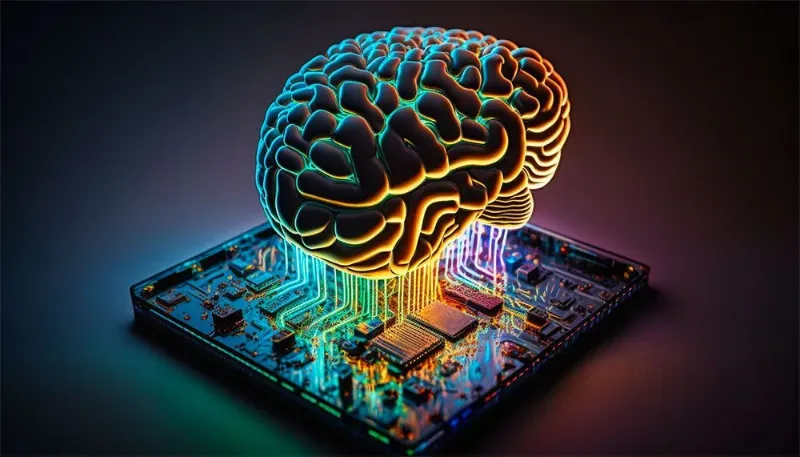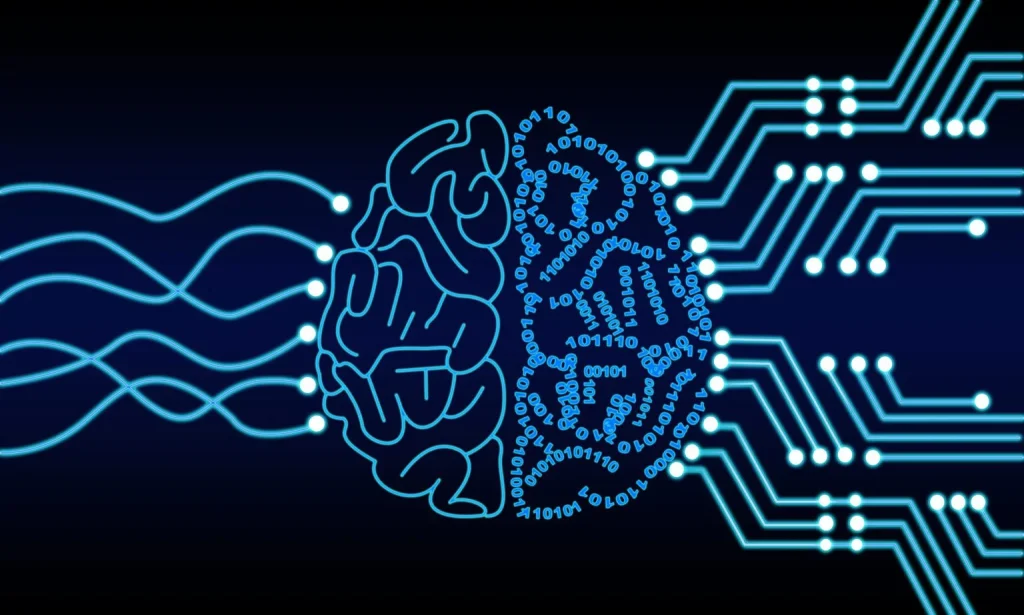Neuromorphic computing is an innovative field that aims to mimic the neural architecture and processes of the human brain to develop more efficient, adaptive, and intelligent computing systems. By emulating the brain’s structure and functionality, neuromorphic computing promises to revolutionize computing technologies, offering advances in processing power, energy efficiency, and cognitive capabilities. This article explores the fundamentals of neuromorphic computing, its key components, applications, benefits, challenges, and future trends.

Understanding Neuromorphic Computing
Neuromorphic computing seeks to replicate the brain’s neural networks and computational principles in hardware and software. Unlike traditional computing, which relies on von Neumann architecture and binary operations, neuromorphic computing emulates the brain’s parallel processing and learning mechanisms.
- Neural Networks:
- Definition: Neural networks are computational models inspired by the brain’s interconnected neurons. They consist of layers of nodes (neurons) that process and transmit information through weighted connections (synapses).
- Applications: Neural networks are used for tasks such as pattern recognition, image processing, and language translation.
- Spiking Neural Networks (SNNs):
- Definition: Spiking neural networks are a type of neural network that models the brain’s spiking behavior, where neurons communicate through discrete electrical pulses (spikes).
- Applications: SNNs are employed in applications requiring real-time processing and temporal pattern recognition, such as sensory processing and robotics.
- Neuromorphic Hardware:
- Definition: Neuromorphic hardware refers to specialized circuits and devices designed to emulate neural processing. Examples include memristors, neuromorphic chips, and analog neural networks.
- Applications: Neuromorphic hardware is used to create energy-efficient, brain-like computing systems for various applications.
- Neuromorphic Software:
- Definition: Neuromorphic software encompasses algorithms and programming frameworks designed to simulate neural processes and learning mechanisms.
- Applications: Neuromorphic software is used to develop intelligent systems capable of adapting and learning from experience.
Key Components of Neuromorphic Computing
- Neurons and Synapses:
- Neurons: Artificial neurons in neuromorphic systems emulate the behavior of biological neurons, processing and transmitting information through electrical signals.
- Synapses: Artificial synapses simulate the connections between neurons, adjusting their weights based on learning rules to strengthen or weaken connections.
- Neuro-inspired Architectures:
- Spiking Neural Networks: These networks model the brain’s temporal coding, where information is encoded in the timing of spikes.
- Analog Neuromorphic Chips: Analog chips use continuous signals to represent neural activity, offering energy-efficient computation for real-time processing.
- Learning Mechanisms:
- Hebbian Learning: Hebbian learning is a fundamental principle where connections between neurons are strengthened when they are activated simultaneously.
- Spike-Timing-Dependent Plasticity (STDP): STDP is a learning rule where the timing of spikes affects the strength of synaptic connections, mimicking the brain’s ability to learn from temporal patterns.
- Event-Based Processing:
- Definition: Event-based processing involves reacting to discrete events or changes in input rather than processing data in fixed time intervals.
- Applications: Event-based processing is used in applications such as sensorimotor control and real-time signal processing.
Applications of Neuromorphic Computing
- Robotics and Automation:
- Real-Time Control: Neuromorphic computing enables robots to process sensory information and make real-time decisions, enhancing their ability to navigate complex environments.
- Adaptive Learning: Robots equipped with neuromorphic systems can learn from experience and adapt their behavior to new situations.
- Artificial Intelligence and Machine Learning:
- Pattern Recognition: Neuromorphic computing enhances pattern recognition and classification tasks by emulating the brain’s ability to identify patterns and anomalies.
- Cognitive Computing: Neuromorphic systems contribute to the development of cognitive computing applications, such as natural language processing and decision-making.
- Healthcare and Neuroscience:
- Brain-Machine Interfaces: Neuromorphic computing facilitates the development of brain-machine interfaces (BMIs) that allow direct communication between the brain and external devices.
- Neuroscientific Research: Neuromorphic models provide insights into brain function and dysfunction, aiding research into neurological disorders and treatments.
- Energy-Efficient Computing:
- Low-Power Processing: Neuromorphic systems are designed for low-power operation, making them suitable for energy-constrained environments and applications.
- Edge Computing: Neuromorphic computing supports edge computing by enabling intelligent processing at the edge of networks, reducing the need for centralized data processing.
- Environmental Monitoring:
- Sensor Networks: Neuromorphic systems enhance sensor networks for monitoring environmental conditions, such as air quality, climate change, and natural disasters.
- Predictive Analytics: Neuromorphic computing supports predictive analytics by processing complex environmental data and identifying trends and patterns.

Benefits of Neuromorphic Computing
- Enhanced Efficiency:
- Energy Efficiency: Neuromorphic computing offers significant energy savings compared to traditional computing by mimicking the brain’s low-power operation.
- Parallel Processing: Neuromorphic systems can perform multiple computations simultaneously, improving processing speed and efficiency.
- Adaptive Learning:
- Real-Time Adaptation: Neuromorphic systems can adapt to new information and changing environments in real-time, enhancing their ability to handle dynamic tasks.
- Learning from Experience: Neuromorphic computing enables systems to learn from experience and improve their performance over time.
- Cognitive Capabilities:
- Pattern Recognition: Neuromorphic systems excel at recognizing patterns and anomalies, making them suitable for applications requiring advanced pattern analysis.
- Decision-Making: Neuromorphic computing supports decision-making processes by emulating the brain’s cognitive functions and problem-solving abilities.
- Miniaturization:
- Compact Design: Neuromorphic hardware can be designed to be compact and lightweight, making it suitable for integration into portable and wearable devices.
- Integration with IoT: Neuromorphic computing supports the integration of intelligent processing into Internet of Things (IoT) devices, enhancing their functionality.
Challenges and Considerations
- Complexity of Design:
- Hardware Design: Developing neuromorphic hardware requires advanced design techniques and specialized components, posing challenges in terms of fabrication and integration.
- Algorithm Development: Creating neuromorphic algorithms that accurately model brain processes and learning mechanisms requires significant research and development.
- Scalability:
- Scaling Up: Scaling neuromorphic systems to handle large-scale applications and datasets presents challenges in terms of performance and resource management.
- Cost Considerations: The cost of developing and deploying neuromorphic systems may be higher compared to traditional computing technologies.
- Interdisciplinary Collaboration:
- Expertise Required: Neuromorphic computing involves expertise from multiple fields, including neuroscience, computer science, electrical engineering, and materials science.
- Research and Development: Collaborative efforts are needed to advance neuromorphic technologies and address challenges related to design, implementation, and application.
- Ethical and Societal Implications:
- Privacy Concerns: The use of neuromorphic systems in sensitive applications, such as brain-machine interfaces, raises privacy and ethical concerns related to data security and personal information.
- Impact on Employment: The adoption of neuromorphic computing may impact employment in certain sectors, necessitating consideration of its effects on the workforce and job displacement.
Future Trends and Developments
- Advancements in Neuromorphic Hardware:
- Innovative Materials: Research into new materials and technologies, such as memristors and resistive switching devices, will drive the development of more efficient neuromorphic hardware.
- Integration with Quantum Computing: Future developments may integrate neuromorphic computing with quantum computing to enhance processing capabilities and solve complex problems.
- Enhanced AI Capabilities:
- Cognitive Enhancement: Neuromorphic computing will contribute to the development of more advanced artificial intelligence systems with improved cognitive and adaptive capabilities.
- Human-AI Collaboration: Neuromorphic systems will facilitate collaboration between humans and AI by enabling more natural and intuitive interactions.
- Neuromorphic Computing in Consumer Devices:
- Wearable Technology: Neuromorphic computing will be integrated into wearable devices, such as smartwatches and augmented reality glasses, to provide enhanced functionality and intelligence.
- Smart Homes: Neuromorphic systems will support the development of smart home devices with advanced sensory and decision-making capabilities.
- Ethical and Regulatory Frameworks:
- Ethical Guidelines: The development of ethical guidelines and regulatory frameworks will address concerns related to privacy, security, and responsible use of neuromorphic technologies.
- Transparency and Accountability: Ensuring transparency and accountability in the design and deployment of neuromorphic systems will build trust and address societal concerns.

Conclusion
Neuromorphic computing represents a paradigm shift in computing technologies, drawing inspiration from the brain’s structure and processes to develop more efficient, adaptive, and intelligent systems. By emulating neural networks and learning mechanisms, neuromorphic computing offers significant advancements in processing power, energy efficiency, and cognitive capabilities. As the field continues to evolve, addressing challenges related to design, scalability, and ethical considerations will be crucial for realizing the full potential of neuromorphic computing and its impact on various industries and applications.


